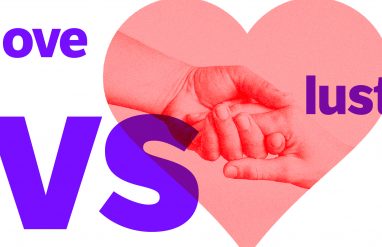As a writer, you’re faced with a lot of choices related to your writing: how long should your essay be? Who should be addressed in a cover letter? What is a thesis statement? But there’s one question that also applies to every composition: how do you distinguish writing that’s informal vs. formal?
That’s right. Whether a piece is informal or formal will influence everything down to the smallest comma and period. But what, exactly, is the difference between formal and informal writing? When do you use one over the other? Are they really that different? If you are wondering the answers to those questions, then read on as we explore the many different features between formal and informal writing.
What is formal writing?
First, you should know that it is the intended readers that will determine if a writer should use formal writing or informal writing. Generally, formal writing is defined as writing targeted toward an audience that a person doesn’t personally know. Typically, formal writing is used when a person wants their writing to be viewed as professional, polite, authoritative, or some combination thereof. For this reason, formal writing is often used in professional settings. For example, formal writing is often the form of writing used in research and academic papers, corporate memos and emails, press releases, and job applications.
What is informal writing?
Informal writing is the inverse of formal writing. In a manner of speaking, informal writing is the T-shirt-and-jeans counterpart to formal writing’s dress coat and pants. In general, informal writing is defined as writing targeted toward an audience that the writer knows personally or with whom the writer wants to establish a friendly tone. Informal writing may include inside jokes, slang, abbreviations, and local colloquialisms.
As you might expect, informal writing is common in casual settings such as social media and in texting between friends. However, you will often see informal writing used in other situations, such as in literature or in lighthearted feature stories in newspapers and magazines.
Formal vs. informal writing
There are many differences between formal and informal writing. We will cover a large number of them here, but this list won’t be exhaustive. Still, you should have a good idea how formal and informal writing differ after looking at these different features.
Grammar, spelling, and punctuation
In almost all cases, formal writing adheres to the proper rules of grammar, spelling, and punctuation. Informal writing, on the other hand, may not. A person may not intentionally break the rules of grammar in informal writing, but they know that a reader is unlikely to care about errors or nonstandard sentence structure.
Examples:
- Formal writing: The writing was clear but had several mistakes; you should revise and redraft the article.
- Informal writing: The writing was clear, but had alot of mistakes… u should revise and redraft the article.
Sentence length
Generally speaking, formal writing often uses long, complex sentences that are connected using transitions. Informal writing often includes shorter sentences that may abruptly move from topic to topic.
Examples:
- Formal writing: Surprise inspections will be performed on a regular basis as determined by the acting supervisor, who has the authority to request them as needed. Furthermore, employees should be prepared to submit their work for review in a timely fashion.
- Informal writing: I love my new sweater! Thank you!! Where do you want to meet for lunch?
Vocabulary and tone
Typically, formal writing has a serious tone and uses a sophisticated vocabulary that often includes large, complex words. Additionally, formal writing often uses technical terms that match the topic being discussed. For example, a medical text using formal writing will often use the term tibia rather than shinbone or a similar term. Informal writing will often instead have a lighter tone that uses simpler, commonly used words.
Examples:
- Formal writing: The research team expeditiously and meticulously analyzed the findings in order to identify the origin of the Staphylococcus infection.
- Informal writing: We were out back chopping down some trees when Mom called.
Third person vs. first person/second person
In general, formal writing is usually written from the third person. Formal writing typically avoids using first- or second-person pronouns such as I, me, we, us, and you. By contrast, informal writing often uses first-, second-, and third-person perspectives while making frequent use of personal pronouns. Because of this difference, formal writing is also more likely to use the passive voice in order to avoid using a first- or second-person perspective.
Examples:
- Formal writing: The data were gathered by using sorting algorithms.
- Informal writing: I used sorting algorithms to gather the data.
Word choice
In general, formal writing will most likely avoid using many of the words or phrases that our dictionary has tagged as being informal. This includes terms such as wanna, gotta, gonna, ‘nuff, kerfuffle, cept, ’Merica, thingamajig, and many other examples of informal language. Relatedly, phrasal verbs are also often typically not used in formal writing. Formal writing will also typically avoid using slang, euphemisms, colloquialisms, expletives, vulgarities, nonstandard abbreviations, jargon, and online acronyms.
Examples:
- Formal writing: Gregory wanted to remove the items from the box, but it was sealed tightly. Being unable to find scissors, he admitted defeat and ate a sandwich.
- Informal writing: Greg was dying to get the stuff outta the box, but the box was like it ain’t happening bro lol. He couldn’t find the damn scissors, so he said the hell with it and bounced to go scarf a hoagie.
Interjections
Typically, interjections are not used in formal writing. Going further, exclamation points usually don’t appear very often in formal writing. Both interjections and exclamation points are used in informal writing.
Examples:
- Formal writing: The mixture violently erupted, catching bystanders unaware.
- Informal writing: The stuff exploded! Wow!
Contractions
Typically, contractions are avoided in formal writing, and the words are instead spelled out. In informal writing, contractions are commonly used.
Examples:
- Formal writing: The team would have purchased extra materials, but the store was not open.
- Informal writing: The team would’ve purchased extra materials, but the store wasn’t open.
Objectivity
In general, formal writing is usually written objectively. In most cases, writers attempt to avoid stating subjective thoughts or presenting personal opinions in the main text of formal writing. When presenting arguments in formal writing, writers often calmly present their side backed by supporting evidence and trustworthy sources. Informal writing can include (strongly worded) personal opinions, emotional appeals, and inflammatory language presented without evidence or supporting facts.
Examples:
- Formal writing: As the evidence clearly shows, the director severely miscalculated production costs when initially presenting the film’s budget.
- Informal writing: The incompetent buffoon who claims to be a professional director blew the budget so badly that the studio should fire him as soon as possible.
Example of formal writing
The following excerpt shows an example of formal writing that was used in a statement released by American president Joe Biden:
Love is love, and Americans should have the right to marry the person they love. Today’s bipartisan vote brings the United States one step closer to protecting that right in law. The Respect for Marriage Act will ensure that LGBTQI+ couples and interracial couples are respected and protected equally under federal law, and provide more certainty to these families since the Supreme Court’s decision in Dobbs. I want to thank the Members of Congress whose leadership has sent a strong message that Republicans and Democrats can work together to secure the fundamental right of Americans to marry the person they love. I urge Congress to quickly send this bill to my desk where I will promptly sign it into law.
Example of informal writing
The following example of informal writing is a review of the movie Fight Club by a user of the aggregator website Metacritic:
Best movie of all time. Period. Seen it more than 28 times. Its a bible of what we have to learn. I say you are not your clothes. You are not the brands u wear, even when u think they re part of ur personality. Comb your hair. I ll tell everyone here the end of the movie, but that its not what this movie is about. First rule of fight club is… you do not talk about fight club. And if u havent seen this film then you are a hollow shell. Become human again and start by watching this lesson.













